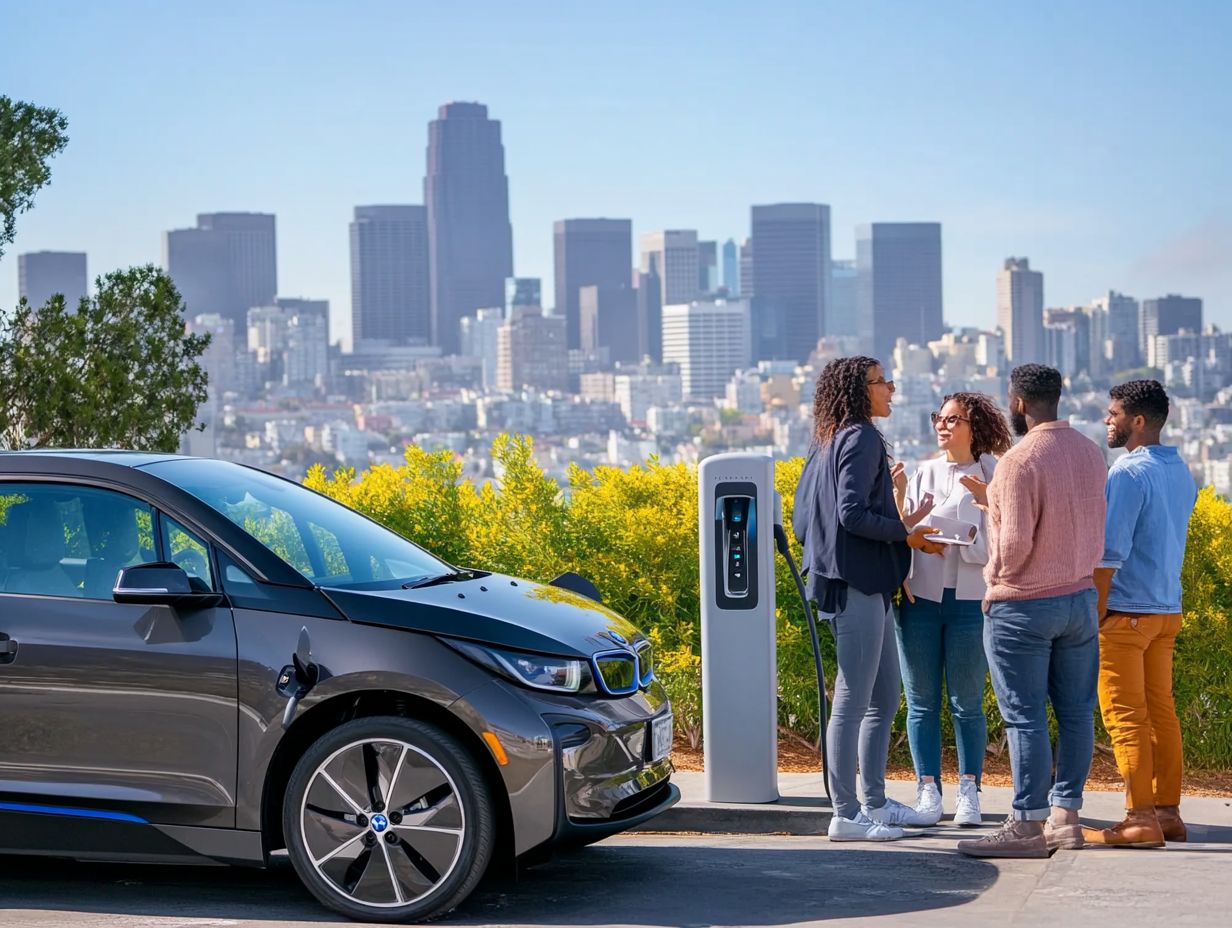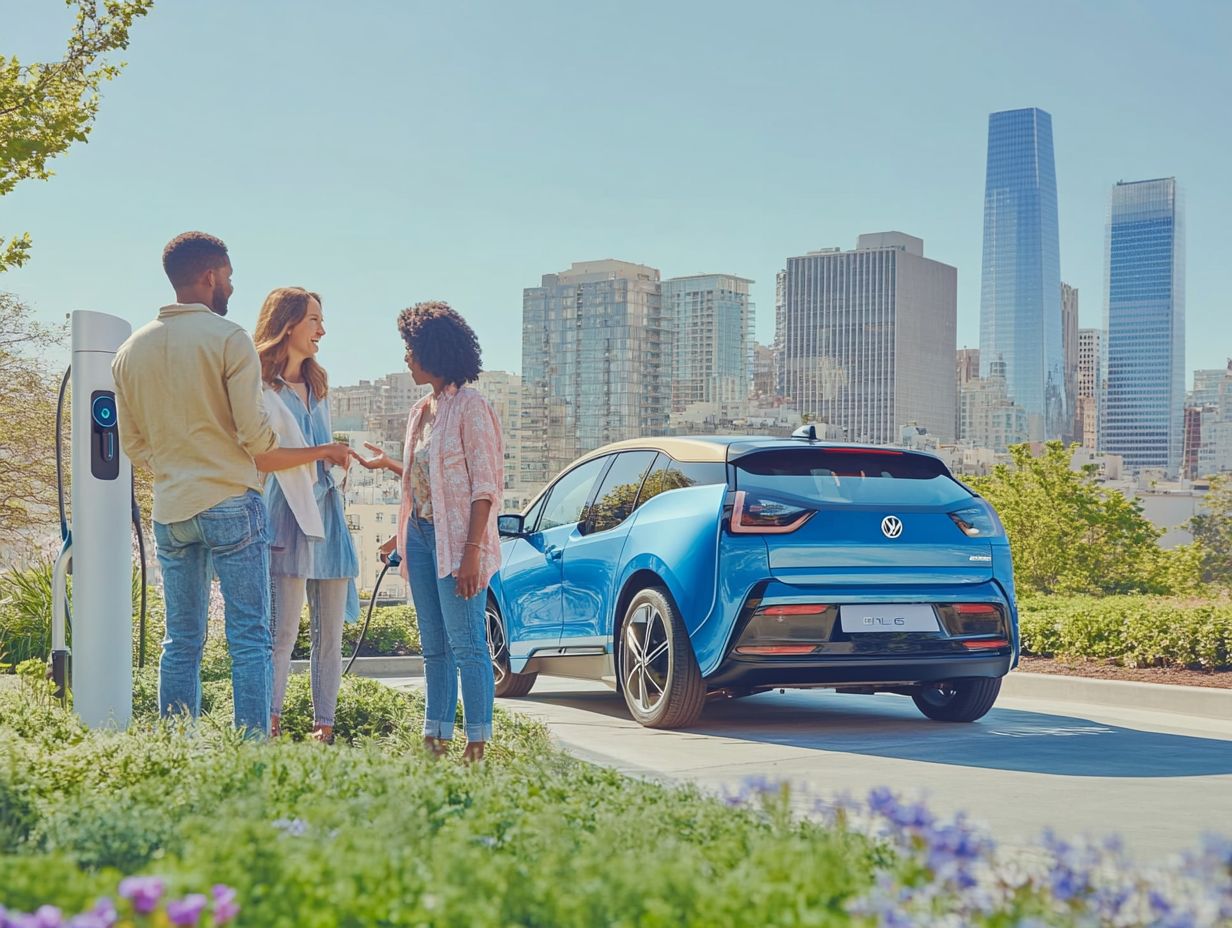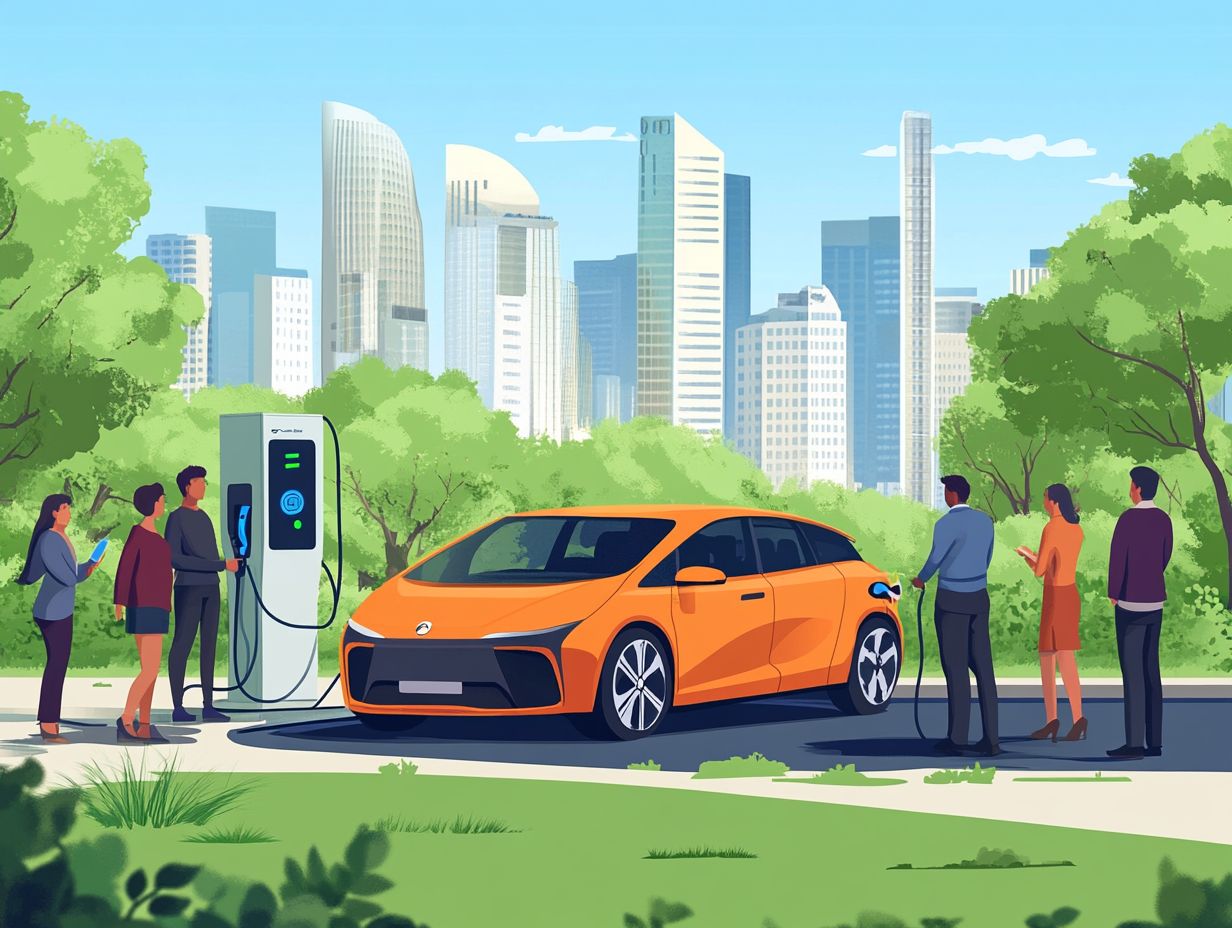what to expect from future ev incentives
As electric vehicles (EVs) continue to rise in popularity, understanding the range of available incentives can significantly influence your purchasing decisions.
This article delves into the various types of incentives currently offered, highlighting the programs and policies that are shaping the EV landscape, along with potential future changes.
By examining how these incentives affect the EV market and what they signify for consumers like yourself, you ll be well-prepared to navigate the evolving world of electric vehicle ownership.
Explore with us as we uncover the essential details about EV incentives and their implications for your future!
Contents
- Key Takeaways:
- What You Need to Know About EV Incentives!
- The Latest on EV Incentives: What to Expect!
- Potential Future Changes
- Impact on the EV Market
- Considerations for Consumers
- Frequently Asked Questions
- What to expect from future EV incentives?
- How will future EV incentives impact the auto industry?
- Will future EV incentives only apply to certain types of electric vehicles?
- How long will future EV incentives be available?
- What are the potential benefits of future EV incentives?
- Will future EV incentives be available globally?
Key Takeaways:

Future EV incentives are likely to expand beyond just financial benefits, with potential incentives for charging infrastructure, carbon offsets, and more. As the EV market continues to grow, governments and companies will likely introduce new and innovative incentives to encourage adoption and sustainability.
You should stay informed about evolving EV incentive programs and consider them when making purchasing decisions, as incentives can significantly impact the overall cost of owning an EV.
What You Need to Know About EV Incentives!
The landscape of EV incentives has changed, especially with the rollout of the federal EV tax credit, which plays a crucial role in shaping your purchasing decisions while aligning with broader climate goals.
This tax break provides a range of financial incentives for eligible electric vehicles (EVs), encompassing both new and used models. As you navigate this opportunity, it s essential to be aware of key requirements, such as the Manufacturer’s Suggested Retail Price (MSRP) limits and income thresholds, to maximize your potential savings.
Types of Incentives Available
Various types of incentives await you as an electric vehicle (EV) buyer. These include federal tax credits and rebate programs designed to promote the adoption of clean vehicles.
These incentives can dramatically reduce the overall cost of purchasing an EV, making them much more attractive to a broader audience. Take the federal tax credit, for example; it varies based on the manufacturer s sales volume and comes with certain limitations that you need to fully understand.
Many states also offer unique incentives that may include rebates or tax exemptions. Your eligibility often depends on specific vehicle specifications, such as battery size or fuel economy ratings.
It s essential for you to connect with local dealerships, as they play a critical role in guiding you through the financing options available and ensuring you maximize all potential incentives for your purchase.
The Latest on EV Incentives: What to Expect!
As you look ahead to 2024, you’ll find that the landscape of EV incentives presents a strong framework of programs and policies carefully designed to encourage electric vehicle adoption.
This not only advances clean vehicle initiatives but also fosters the growth of the auto industry, positioning you at the forefront of a change in how we drive.
Existing Programs and Policies

Existing programs and policies related to EV tax credits and government incentives are pivotal in shaping the electric vehicle landscape, providing you with various pathways to register clean vehicles while following the rules set by the energy department.
Take the Oregon Clean Vehicle Rebate Program, for example. It offers substantial rebates that could directly sway your purchasing decisions when considering an EV. These state-level incentives often work in harmony with federal tax credits, presenting a compelling financial advantage for you as a consumer.
But navigating these incentives may feel like a maze; the complexity of eligibility requirements and deadlines can easily become overwhelming. Your awareness of such programs can vary, potentially leading to missed opportunities in your quest for a new vehicle.
Understanding the interplay of these incentives is crucial, as they can significantly lower the overall cost of EV ownership for you.
Potential Future Changes
As you look to the future, potential changes in EV incentives could dramatically redefine the electric vehicle landscape.
Proposed legislation intends to enhance financing options and boost government incentives for consumers, creating a more enticing environment for EV adoption.
Stay informed to make the best choice for your next vehicle!
Proposed Incentives and Legislation
Proposed incentives and legislation surrounding the EV tax credit increasingly emphasize enhancing financial rewards for consumers like you who want to invest in clean vehicles. This approach promotes advancements in battery materials and strengthens automotive financing options.
This transition toward a more supportive regulatory framework is designed to make electric vehicles more accessible and financially viable. It effectively lowers the barrier to entry for everyday consumers. By providing substantial tax breaks and subsidies, the government aims to accelerate your adoption of electric vehicles, which could ignite innovation within the automotive sector.
Such legislative efforts could make electric vehicles available to more people, influencing both the production strategies of automakers and the economic landscape for technology developers. As a result, you ll enjoy lower upfront costs along with enhanced long-term savings from reduced fuel and maintenance expenses.
Impact on the EV Market
The impact of EV incentives on the market is considerable. Projected growth and adoption rates indicate a significant shift toward electric vehicles, propelled by government incentives and consumer benefits that resonate with climate goals.
This transformation will reshape the automotive landscape, making it essential for you to stay informed and engaged with the evolving trends in electric mobility.
Projected Growth and Adoption Rates

Projected growth and adoption rates in the EV market signal a bright future for electric vehicles, driven by substantial consumer benefits and enticing financial incentives from various government initiatives.
Recent data reveals that electric vehicle sales have skyrocketed by over 60% annually. Projections indicate that EVs could comprise more than 30% of total vehicle sales by 2030.
This swift adoption is propelled by falling battery costs, climbing fuel prices, and a heightened focus on sustainable transportation. Government incentives such as tax credits, rebates, and investments in charging infrastructure are crucial to this transition.
For you, these incentives mean not just significant savings at the time of purchase but also reduced long-term operating costs. This makes electric vehicles increasingly attractive and accessible to a wider audience.
Considerations for Consumers
When exploring electric vehicles, you ll need to navigate a range of factors that will influence your purchasing decisions.
Considerations such as tax liability, budget constraints, and the specifications of eligible EV models play a crucial role in determining your overall ownership costs.
How Incentives Affect Purchasing Decisions
Incentives play a crucial role in shaping your purchasing decisions when it comes to electric vehicles. The EV tax credit and other financial perks offer significant benefits that can simplify your experience at the dealership and enhance accessibility.
By reducing the overall cost of ownership, these incentives not only make electric vehicles more attractive but also assist you in navigating the often intricate world of auto financing. Auto loans can be tailored to align with these incentives, allowing you to fully capitalize on available credits and rebates.
Dealerships are increasingly weaving these financial incentives into their sales strategies, making it easier for you to transition from traditional gasoline-powered cars. As your awareness of the environmental benefits of electric vehicles grows, combined with appealing financial arrangements, it becomes clear that these elements are transforming the way you approach your next vehicle purchase.
Frequently Asked Questions
Here are some common questions about future EV incentives.
What to expect from future EV incentives?

Future EV incentives are expected to become more widespread and generous as governments and companies continue to prioritize electric vehicles as a sustainable alternative to traditional cars. This could include increased tax credits, rebates, and other financial incentives to make EVs more affordable for consumers.
Explore the exciting world of electric vehicles today and take advantage of the benefits waiting for you!
How will future EV incentives impact the auto industry?
Future EV incentives will significantly affect the auto industry. They will encourage more consumers to buy electric vehicles (EVs), leading to less demand for gasoline-powered cars.
This shift could drive innovation and competition among automakers.
Will future EV incentives only apply to certain types of electric vehicles?
Future EV incentives may only apply to specific types of electric vehicles. For instance, they might focus on models with longer driving ranges or those produced domestically.
Governments and companies want to promote the most environmentally-friendly and economically beneficial EVs.
How long will future EV incentives be available?
The duration of EV incentives will vary by program and country. Some may be temporary, while others could be permanent.
Stay informed about the latest EV incentives available in your area!
What are the potential benefits of future EV incentives?
Future EV incentives can reduce carbon emissions and improve air quality. They promote a more sustainable transportation system.
These incentives also make EVs more affordable, leading to potential long-term savings on fuel and maintenance.
Will future EV incentives be available globally?
Future EV incentives may expand globally as more countries commit to reducing carbon footprints. This growing trend promotes electric vehicles, which could increase the availability of incentives worldwide.






